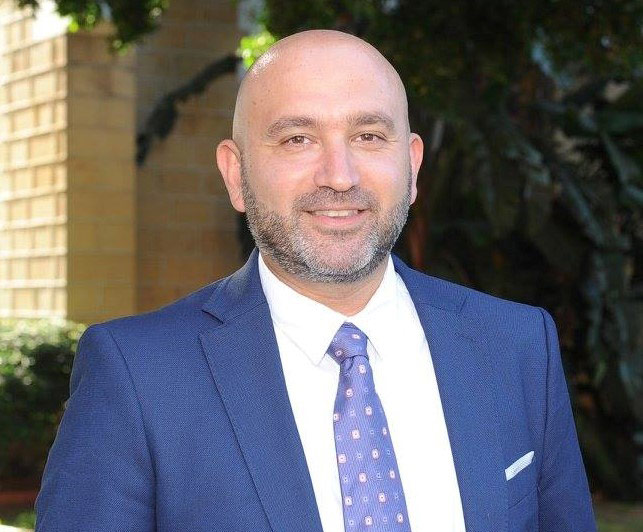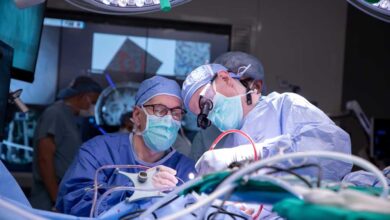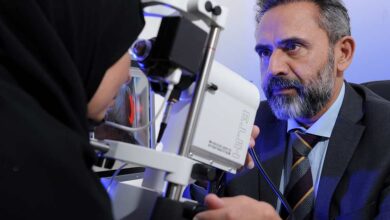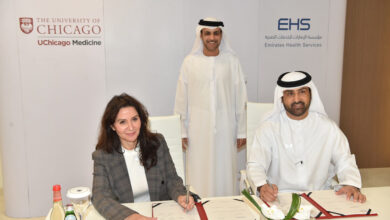Dr. Ziyad Mahfoud
Professor of Research in Population Health Sciences at Weill Cornell Medicine-Qatar (WCM-Q)
“Our courses are designed to equip healthcare professionals in Qatar and beyond with core biostatistical research tools”

Dr. Ziyad Mahfoud is a Professor of Research in Population Health Sciences at Weill Cornell Medicine-Qatar (WCM-Q). Dr. Mahfoud is an internationally recognized authority in the field of biostatistics and population health sciences, with special expertise in the design of complex studies including clinical trials, and in advanced data analyses.
An experienced researcher and educator, Dr. Mahfoud has a strong record of winning extramural funding and publishing studies in a variety of fields, including patterns of tobacco use, mental health, adolescent health and medical education. He has also created and taught undergraduate, graduate, and Continuing Professional Development courses, for which he has received high praise and numerous awards. Dr. Mahfoud holds a Ph.D. in Statistics (2001) from the University of Florida at Gainesville. He joined WCM-Q in 2010 from the American University in Beirut where he served as an Associate Professor in the Department of Epidemiology and Population Health.
Dr. Mahfoud currently delivers several Continuing Professional Development courses on research methods designed to equip healthcare professionals in Qatar and beyond with core biostatistical research tools to enable them to design, execute and interpret the results of their own medical research studies.
Dr. Mahfoud spoke with “Hospitals” magazine about the success of these courses and how his work is helping Qatar leverage the expertise of healthcare professionals within the country to conduct high-quality research that benefits patients and contributes new scientific knowledge to the world of medicine.
The training provided by Dr. Mahfoud and the Division of Continuing Professional Development makes a strong contribution to the mission of WCM-Q to provide excellence in teaching and patient care, as well as supporting Qatar’s aim to establish a thriving biomedical research sector in the country as part of the drive towards a knowledge-based economy.
What was the motivation for the Division of Continuing Professional Development at WCM-Q to create these research methods courses?
As a biostatistician, I was inundated with requests for help from healthcare professionals. There is a shortage of biostatisticians in academia, not just in Qatar and the region, but also in the US, Europe and indeed all over the world. I realized there was a tremendous bottleneck caused by a general lack of training in biostatistics among healthcare professionals of all types which was holding back a great deal of useful research and insight. So, with my colleagues in the Division of Continuing Professional Development (WCM-Q), I began designing a program to address this need. Our ultimate goal is to enable healthcare professionals to organize, manage and analyze their data, which will help increase the research output in Qatar and beyond, ultimately helping to improve patient care and population health.
Please describe the program you created.
Our Research Methods Training series of activities is designed to suit all levels, beginning with the basics and building up to more advanced materials and methods, with a strong emphasis on the development of practical skills that will be useful in the real world. It spans from the knowledge and interpretation of statistical results presented in articles, to critical appraisal of such articles and ultimately the design and analysis of studies. The centerpiece of the series is our Certificate in the Analysis of Medical Data, which we launched in 2019. This comprises three workshops: introductory, intermediate and advanced, and featured a combination of didactic lectures and hands-on training with dedicated statistical analysis software using case studies.
What factors influenced the type of training you developed?
The idea is that we want actually to enable healthcare professionals to be able to do research; this is not supposed to remain purely theoretical knowledge.
Our participants are highly motivated because they already work in the healthcare field and they want to understand how they can serve the profession and their patients with maximum effectiveness. Our participants are physicians, pharmacists, dentists, nurses and other allied healthcare professionals, so they are highly trained and knowledgeable in their fields. However, during their academic years they don’t get enough training on research methods or data analysis because training is traditionally patient-focused rather than research-focused, for obvious reasons.
Our idea was to create a training series, starting from basic principles, where we want them to start understanding biostatistics and data analysis, the output in articles and the vocabulary of biostatistics. So when I tell them something like a P-value or a 95% confidence interval, or the word ‘accuracy’ versus ‘precision’ and what the difference is between them, they understand what I am talking about, and very quickly they become oriented to this new way of thinking about data. Then we can move to more advanced reading, for example, something like survival analysis. This leads us to a point where I can begin to encourage them to design their own study, such as clinical trials.
What is the benefit of healthcare professionals undertaking this training?
Especially when the COVID-19 pandemic began, we started seeing a lot of clinical trials being conducted as the healthcare professionals were trying out the new vaccines and new and existing drugs as treatments for the disease. So we saw in an accelerated and intensified way why critical appraisal of clinical trials and an understanding of statistical analysis are so important – it allows healthcare workers to find out very quickly what helps their patients and what doesn’t and to finesse their actions accordingly. For this, we did a two-part webinar on critical appraisal of clinical trials, which is not just about understanding the results, but also interpreting existing research better, answering the question, “Is this a good study?” and, “can I trust these results?”. Regardless of what the results are, to answer the crucial questions of whether the study has utilized a good methodology and done a good job. I think that once you can criticize somebody’s work you are looking with a lot of detail at the study in totality and can determine how much weight to give to the conclusions, rather than just focusing on a few lines in the results section and attempting to understand the research from that in a fairly basic way. And by becoming able to critically appraise research like this, clinicians develop an understanding of what it takes to build a good research methodology. This allows healthcare professionals, their patients and the healthcare sector as a whole to benefit from the existing body of medical research, and for the professionals to begin to add to it. It’s very powerful to be able to plug into that sort of knowledge.
How do you lead healthcare professionals from a theoretical understanding of the material to conducting their own research?
This is quite straightforward. For example, in the workshops of our certificate in the analysis of medical data, I lecture and we do case studies. The participants are given some data, they analyze the data and I give them exercises that they work on with the help of facilitators. After each of the workshops, I send the participants an assessment and they have to pass all three assessments to get the certificate. The idea here is to make sure the participants know what they need to do and that they are able to do it. For that, I give them another dataset and I ask them to tell me what kind of analyses I should do for different research questions. We also use a specialized software platform that is very widely used in the region and all over the world.
We are also guided by the feedback we receive from participants. A very common question asked by researchers and participants in our training is how many patients they need to recruit to a study. Study sample size depends on many things such as the study design and the type of outcome used. In response to this demand, we planned and delivered a half-day training on this guided by what the practitioners ask for – this helps us to keep the training very practical and highly focused.
How do you intend to develop the training you offer in the future?
This year, we are launching two more training workshops – we are going to do a hands-on data analysis workshop using another software platform, which was recommended by past participants and is very popular in the region. I’m also preparing an introduction to scientific writing. This was also motivated by the participants in our other training. Some researchers have data that they have analyzed, but they don’t know how to write a manuscript, what each section should contain, how they can edit it, how they can submit it, how to choose a journal, or what’s the impact of a journal.
We also have plans for other things coming up and hopefully what we are doing is ‘filling in the gaps’ for would-be researchers in terms of making them able to plan a project, analyze a project and write it up.
One thing we did that was very pleasing was that we sent out a follow-up survey a full two years after running the first certificate program and the main goal was to see the impact on actual scientific output. We asked our former participants if our training had actually helped them draft a paper, submit a paper, and finally to publish a paper.
The result was that 70 percent of the former participants said yes, the workshops helped them to draft an original article and 56 percent said yes, it had helped them actually publish an article, and around 86 percent said the workshop improved their ability in a variety of statistical analysis skills and their understanding of the discipline in general. So we are very encouraged moving forwards that our work is having the desired results and we are full of enthusiasm for the future of this project.
















